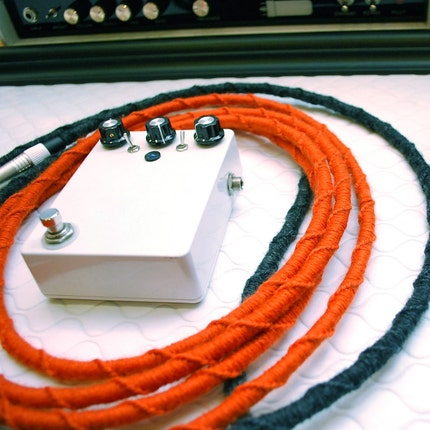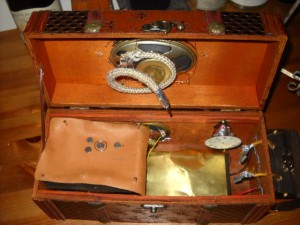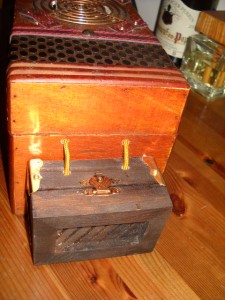When in an inventive mood of tinkering and, well, inventing, the good Rev. Cpt. and I have found that one of the great conundrums of creating a proper invention is the details, and sometimes said details can seem to be beyond one’s means.
A great example of this is the problem of wiring. When creating a device, such as say, an EMF Reader that has a separate battery pack, or an EVP Recorder that has internal wiring, what does one do (and how does one subtly promote their own inventions in a blog post?)
There are two solutions to this problem. The first, oft used by reenactors, steampunk inventors and people who just want their wiring to not look cheap, is to buy a thick shoe-lace or laundry cord and simply run the real wire through it (sometimes, as in the laundry cord, you have to take an inner cotton stuffing out.)
An example of this is the RL&GEMS EMF Reader and EVP recorders. We used this technique in each. For the EMF Reader, we had to figure out how to get the wires that connected (via alligator clips) the battery to the machine to look appropriate. We solved this by running an actual, already plastic insulated, wire through some cloth cord.
We did the same thing with plug for the EVP Reader that is used to connect to the recording device itself to the speaker/microphone as you can see in this picture.
The problem with this technique is two fold though. It is bulky, one, and thus only works for large wires, usually the kind you would have externally. It is not good for small scale internal wiring. The second is that it is a long, cumbersome, and arduous process, as will be expanded upon later.
So while wrapping wiring is a great DIY way to do things, it isn’t your only option. Sundial Wire is a great place to go for fairly inexpensive cotton and rayon coated wire. On top of that they offer a variety of gauges, colors and types. I used some of them for the wiring that connects the battery pack to the internal terminals to power the “Frequency Flux” device in the EVP Recorder.
And while it is not AS DIY to have someone else cover your wire in cloth for you, it looks better and is easier to use I find. As I mentioned earlier, wrapping your own can take up to an hour for less than a foot and is an arduous process, at least from my experiences it is.
There are other companies that offer wrapped cords. Cordinated Cables offers great looking guitar and audio cables already wrapped in stylish cloth.

And for those on the other side of the proverbial “pond” there AES offers braided cables, though it seems they are more geared toward vintage car restoration.
If anyone else happens to have a suggestion, by all means add it to the comments. Otherwise happy fabricating!
Best,
-The Lord Baron




1 Comment.
Hey! Juli from Cordinated here, Thanks for the post! I just found it through google. :)